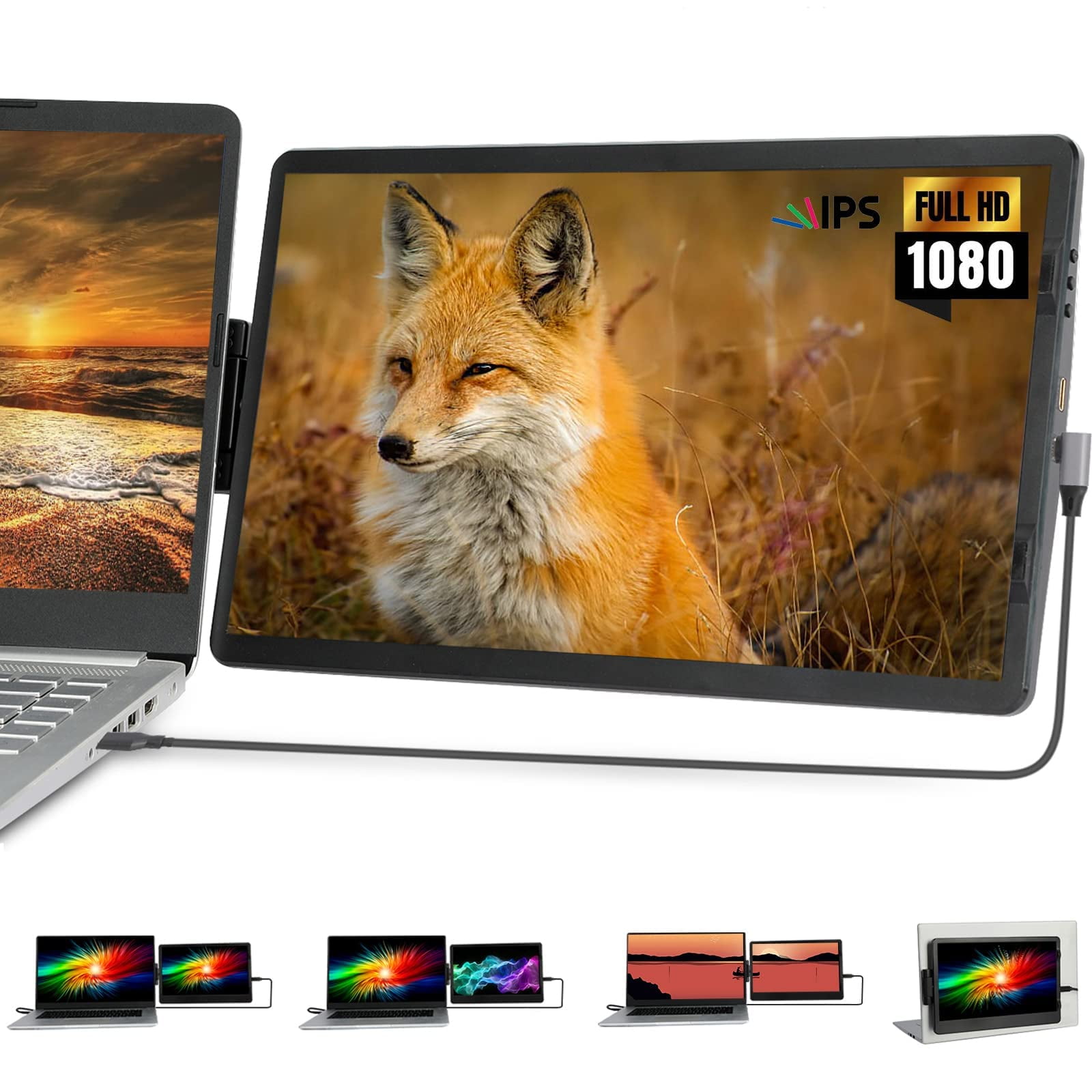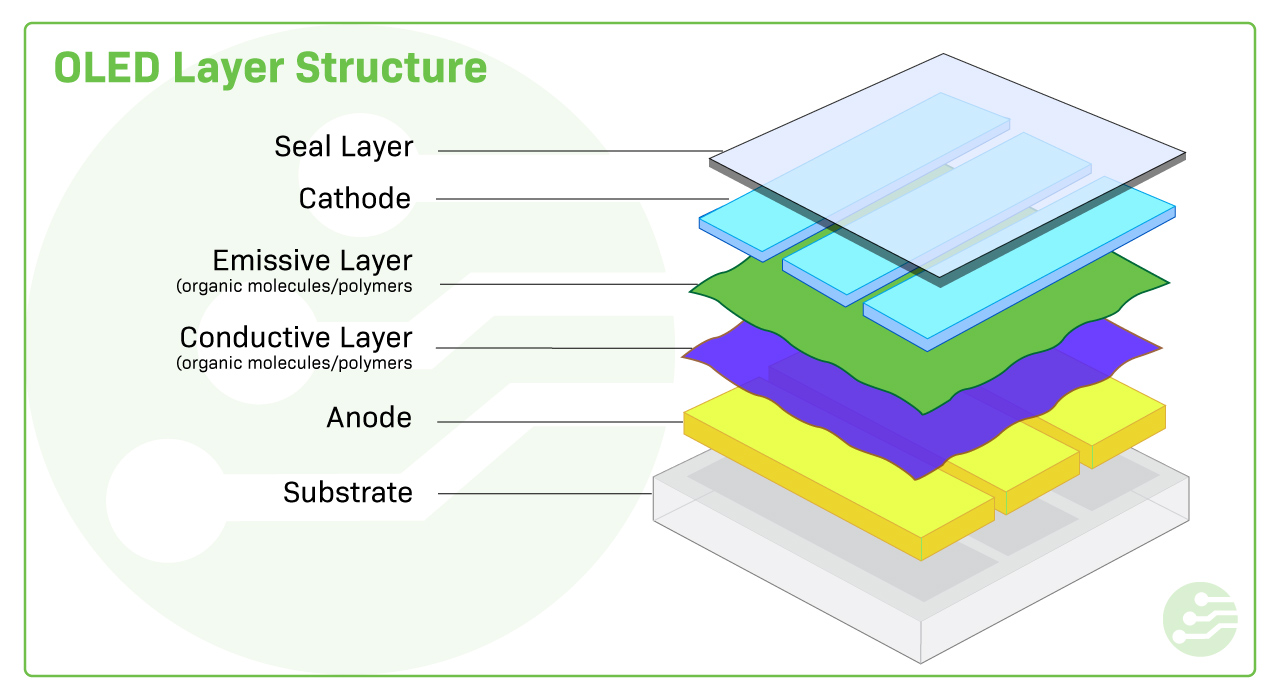Types of Laptop Screens
Do You Know That Laptop Have A Different Type of Screens ?
Laptop monitors are all liquid-crystal displays (LCDs) and have two kinds of light sources – LED or CCFL. CCFL, or cold cathode fluorescent lamps, are a lighting technology used to project an image on the LCD. Light-emitting diodes (or LEDs) also emit light, but in a different way than an CCFL screen.
The screen is one of the most important components in your laptop, which means you're going to interact more with it. From IPS to OLED, from 11 inches to 17 inches, and from aspect ratios to resolutions, understanding laptop screens can help you make the right choice for your needs.
Lets find out how many types of screen laptops and what is a differences.
1. Liquid Crystal Display (LCD)
Viewing Angels
The display panel has a viewing angle of 160 to 180 degrees, which is more than CRT's. Therefore, there is a better range of view angles. You can use the laptop to view meetings, presentations or even movies in a conference room full of spectators.
Resolution
The resolution on the laptop with these displays is 1366 x 768 pixels for clearer images of detailed details. The top-tier models can support up to 1920 x 1080p (Full HD resolution).
Contrast Ratio
While the contrast ratios of 500:1 might not show the darkest black and brightest white, some newer models with 1000:1 surely have better visuals. For graphic designers who must work with professional images, it is appropriate to use LCD laptops with a high contrast ratio.
2. Light Emitting Diode (LED)
Viewing Angels
The increased view angle of the LED display is one of its greatest benefits. A number of displays have 178 degree viewing angles so that it is comfortable to view from a variety of positions.
Resolution
Offering a decent resolution of 1280 x 720p (HD), some displays can support up to 3840 x 2160p (4K). Nevertheless, you're capable of experiencing bright and accurate pictures. Watching movies, converting images and other things are the best uses of these laptop displays.
Contrast Ratio
The contrast ratio of the LED screen is generally higher, with a range from 1000:1 to 1500:1. This increases its ability to display deep blacks and bright whites which result in more vivid and realistic images. For content creators and consumers who have a keen interest in image quality, this benefit is particularly useful.
3. In-Plan Switching (IPS)
Viewing Angels
These are the main advantage of IPS screens, with a typical range from 178 degrees across both horizontal and vertical orientation. It means that the image will remain bright and colors won't change when you look at a screen from extreme angles.
The larger viewing angle of the IPS laptop enables it to share content, such as videos or presentations, in a group setting. Furthermore, the consistency of colors across different viewing angles can be beneficial to photographers and graphic designers who need accurate color representation.
Resolution
The display resolution in IPS has a variety of resolutions that range from Full HD (1920 x 1080p, to 4K 3840 x 2160p.
The use of higher resolution allows professionals, such as graphic designers and architects for whom accurate visual representation is indispensable, the opportunity to enhance clarity and detail in their content. Users could enjoy an even more immersive experience of playing games by making the game much more detailed.
Contrast Ratio
When it comes to the contrast range, it is between 800:1 to 1200:1. A high contrast ratio enables the display to distinguish between light and dark colors, resulting in more vivid and detailed images.
4. Organic Light Emitting Diode (OLED)
Viewing Angels
OLED panels offer the same colour and brightness even in view of offcenter angles, as this technology does not rely on a backlight. In this case, the colour and brightness are almost perfectly aligned even when viewed from extreme angles.
OLED also provide an even more diverse viewing angle than the IPS, with almost no distortion or shift in brightness and colour. OLED displays provide a reliable and consistent visual experience for users, whether they work on their own or in a collaboration environment.
Resolution
These display options are also flexible when it comes to resolution, providing you with a range of possibilities that suit your needs. OLEDs are providing high quality visual performance that is ideal for a wide variety of tasks, between Full HD (1920 x 1080 pixels to 3840 x 2400) pixels.
Contrast Ratio
When it comes to contrast ratios, OLED display is the only one with an impressive 1,000,000:1 ratio. It is because each pixel in this picture has the ability to turn on and off independently, resulting in true blackness and vivid colors.
OLEDs, on the other hand, are uniquely capable of creating perfectly black color because pixels emit light when activated but aren't fully shut down if they don't.
5. Active Matrix Organic Light Emitting Diode (AMOLED)
Viewing Angels
These displays can be viewed from any angle with no distortion, provided that they are positioned at the best viewing angles, e.g. 180 degrees.
However, for professionals requiring collaboration and the sharing of screens with colleagues or clients it's a very good choice. In traditional LCD displays, users often have to face a challenge of maintaining optimal image quality while viewing the screen on an angle that is not centered.
Resolution
High resolution displays, such as Ultra HD or 4K Ultra AMOLED displays, have become increasingly popular in recent years, with many flagship smartphones and laptops now equipped with Ultra HD or 4K Ultra AMOLED displays. These make images and text appear sharper and more detailed and offer a larger workspace, allowing for better multitasking and productivity.
Contrast Ratio
AMOLED displays are renowned for their exceptional contrast ratios, with some models offering a ratio of up to 1,000,000:1. This means that the display is capable of producing incredibly deep blacks and vibrant colors that are sure to catch the eye.
AMOLED screens are an ideal choice for a wide range of applications, such as graphic design and video production to gaming and entertainment due to these high contrast ratios.
Information
We deal in new refurbished computers (desktops/laptops), peripherals (hard drive, solid drive, RAM, graphics card, motherboard and power supply) and other accessories (monitor, keyboard and mouse, speakers, printers, toner). and ink cartridge, network equipment) and laptop battery and charger).
All refurbished products are tested to ensure quality meets our standards. All products for sale are in A class condition. Our updated products may have minor cosmetic defects, but this does not affect performance. All refurbished products come with a 12-month hardware warranty. We do provide computer/ laptop repair services. All of our service engineer are well trained, experienced and professional.
We do provide on-site service such as IT support & maintenance solution for home, business and enterprise. The refurbish process is processed by Tyfon Tech, so the manufacturers/brand owners shall not held responsible for any damage/defect or warranties for the used/refurbished products.
Visit Link For More
https://tyfontech.com
Contact us By
email : sales@tyfontech.com
number : 018-2017110 (Kepong)
018-3111491 (Puchong)
Visit us at
Kepong Branch
G09, Ground Floor, Desa Complex,
Kepong, 52100, Kuala Lumpur
Puchong Branch
2F-20 IOI Business Park ,
Persiaran Puchong Jaya,
Selatan 47170 Puchong,
Selangor, Malaysia
Operating Hours
9.00 am - 7.00 pm
Closed on Saturday, Sunday and public holiday













No comments